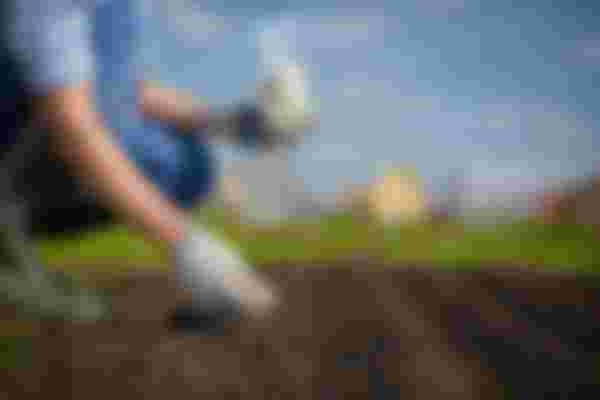Sowing in the open is the simplest and most special way of planting. The most important items for sowing plants outdoors are the conditions in the soil, the temperature and the amount of moisture must be favorable for planting. This skill is acquired through experience from year to year.
Soil preparation
An important item before sowing plants outdoors is to prepare the soil for planting. Preparation for planting would be best prepared in the fall (if feasible). Soil preparation is performed by covering the soil with leaf compost. This improves the surface structure of the soil which encourages better rooting of the plant. Another way to prepare is to satisfy the soil needs of the plant you plan to plant on that soil a few weeks before.

It is also important not to sow the plants if it is too wet, because that destroys the structure of the soil on which you intend to sow the plants. This will also slow down the germination and growth of plants. So if mud sticks to the boots, it is a sign that all work in the garden should be stopped.
How to sow
Most seeds do not have to be sown deep, three millimeters is enough. Larger seeds are sown to a depth that is twice its length. Peas can be sown to a depth of two and a half to four inches, and beans to four to five inches. It is sown in rows, on "houses", by hand or with gel.

Sowing in rows - the seeds are sown in shallow furrows, which they create with the tip of a hoe or a stick. It can be sown along the trench, if it is planned to transplant or to be immediately distributed at a certain distance. Before sowing, it is necessary to water the bottom of the furrow, when sowing is finished, return the soil to the furrow with a rake.
Sowing on houses - seeds are sown on "houses", with a certain distance. Two to six seeds can be sown in each place, depending on the plant. You can sow at a certain distance in a row or dig individual small holes. This reduces seed consumption, especially for plants that are sown spaced apart. Sowing seeds from the hand - the seeds are scattered on the ground and slowly rake. It is suitable for sowing grass, green manure and other types of small and medium seeds that need to be evenly distributed. It is necessary to protect such sown seeds from birds because it is impossible to bury all such sown seeds. The soil cover is suitable because it accelerates the germination of plants. It is important to water the soil after sowing if no rain is expected.

Sowing seeds from the hand - the seeds are scattered on the ground and slowly rake. It is suitable for sowing grass, green manure and other types of small and medium seeds that need to be evenly distributed. It is necessary to protect such sown seeds from birds because it is impossible to bury all such sown seeds. The soil cover is suitable because it accelerates the germination of plants. It is important to water the soil after sowing if no rain is expected.

Gel sowing - gel sowing is a convenient way to accelerate germination indoors and sow seeds outside without the risk of damaging the sensitive root during germination. Sowed in this way often germinates two to three weeks earlier than those from a dry substrate. Sowing with gel gives higher yields of slow-growing plants, such as early carrots, parsnips and onions. Tomatoes that grow outdoors can be sown directly into the ground in areas with short vegetation.
Temperatures for the best germination of seeds of the most popular plants: cabbage (5-32 ° C), onion (7-21 ° C), celery (10-19 ° C), corn (10 ° C), green beans (12 ° C), lettuce (25 ° C), tomato (15 ° C), poppy (15-21 ° C), velvet (18-25 ° C) and beans (5 ° C).
Thanks for reading the article and subscribe me, if you liked the article.



